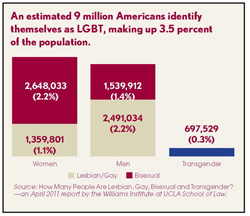Strategies for Cutting-Edge Cases: Guide to Transgender Family Law Fills Case Law Gap

Few families know what to do when children want to live as a gender different from the one they were assigned at birth. And if the decision ends up in court, few attorneys have the resources to help a sway a judge.
GLAD—the Boston-based Gay & Lesbian Advocates & Defenders—recently published a treatise on transgender family law, which the group hopes will help attorneys navigate a growing legal area with scant case law.
“Part of what the book does is compile strategies that attorneys can use at the prelitigation stage,” says Jennifer Levi, director of GLAD’s Transgender Rights Project and a co-editor of the book along with Elizabeth Monnin-Browder, a Ropes & Gray associate.
Transgender Family Law: A Guide to Effective Advocacy includes chapters about relationship recognition, parental rights of transgender individuals and legal protections for transgender youths. It is available in bound and electronic formats.
Family law court judges overseeing cases that involve trans-gender issues often make decisions based on their personal beliefs, Levi says. Few people appeal family court rulings due to cost considerations. And many transgender individuals negotiate away their rights, she adds, because they fear what a family court outcome might be.
There is so little legal protection for transgender people, says Levi. “That’s why the book is essential for planning purposes. It’s important not to wait until negative case law comes up.”



